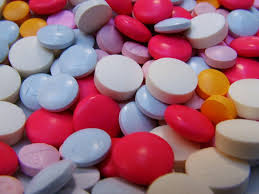Symptom Finder - Headache

The patient who presents with headache is a special challenge. There are several things the physician can do while examining the patient when the headache is occurring:
Occlude the superficial temporal arteries for 1 to 2 minutes. If there is relief of the headache, the patient has a vascular headache, most
likely migraine. If the blood pressure is elevated during an attack, think of pheochromocytoma. If there is nuchal rigidity, quite
naturally one thinks of meningitis or subarachnoid hemorrhage.
It is absolutely imperative to do a funduscopic examination to look for papilledema and hypertensive retinopathy. If pressure on the
jugular veins relieves the headache, the patient may have a postspinal tap headache.
Marked tenderness of the superficial temporal artery on one side should suggest temporal arteritis. Transilluminate the sinuses to look
for sinusitis. If a pseudoephedrine spray (Neo-Synephrine) relieves the headache, the patient may have allergic or vasomotor rhinitis.
Finally, sumatriptan relieves both migraine and cluster headaches and is therefore useful in the diagnosis.
If the physician sees the patient when the headaches are not occurring, a nitroglycerin tablet under the tongue assists in the diagnosis. If this
precipitates the headache, the patient may have migraine. Histamine sulfate subcutaneously may precipitate a headache in both patients with
migraine and in those with cluster headaches.
An injection of lidocaine 1% into the occipital nerve roots may relieve tension headaches. Note that many patients with so-called tension
headache actually have common migraine.
Occlude the superficial temporal arteries for 1 to 2 minutes. If there is relief of the headache, the patient has a vascular headache, most
likely migraine. If the blood pressure is elevated during an attack, think of pheochromocytoma. If there is nuchal rigidity, quite
naturally one thinks of meningitis or subarachnoid hemorrhage.
It is absolutely imperative to do a funduscopic examination to look for papilledema and hypertensive retinopathy. If pressure on the
jugular veins relieves the headache, the patient may have a postspinal tap headache.
Marked tenderness of the superficial temporal artery on one side should suggest temporal arteritis. Transilluminate the sinuses to look
for sinusitis. If a pseudoephedrine spray (Neo-Synephrine) relieves the headache, the patient may have allergic or vasomotor rhinitis.
Finally, sumatriptan relieves both migraine and cluster headaches and is therefore useful in the diagnosis.
If the physician sees the patient when the headaches are not occurring, a nitroglycerin tablet under the tongue assists in the diagnosis. If this
precipitates the headache, the patient may have migraine. Histamine sulfate subcutaneously may precipitate a headache in both patients with
migraine and in those with cluster headaches.
An injection of lidocaine 1% into the occipital nerve roots may relieve tension headaches. Note that many patients with so-called tension
headache actually have common migraine.
